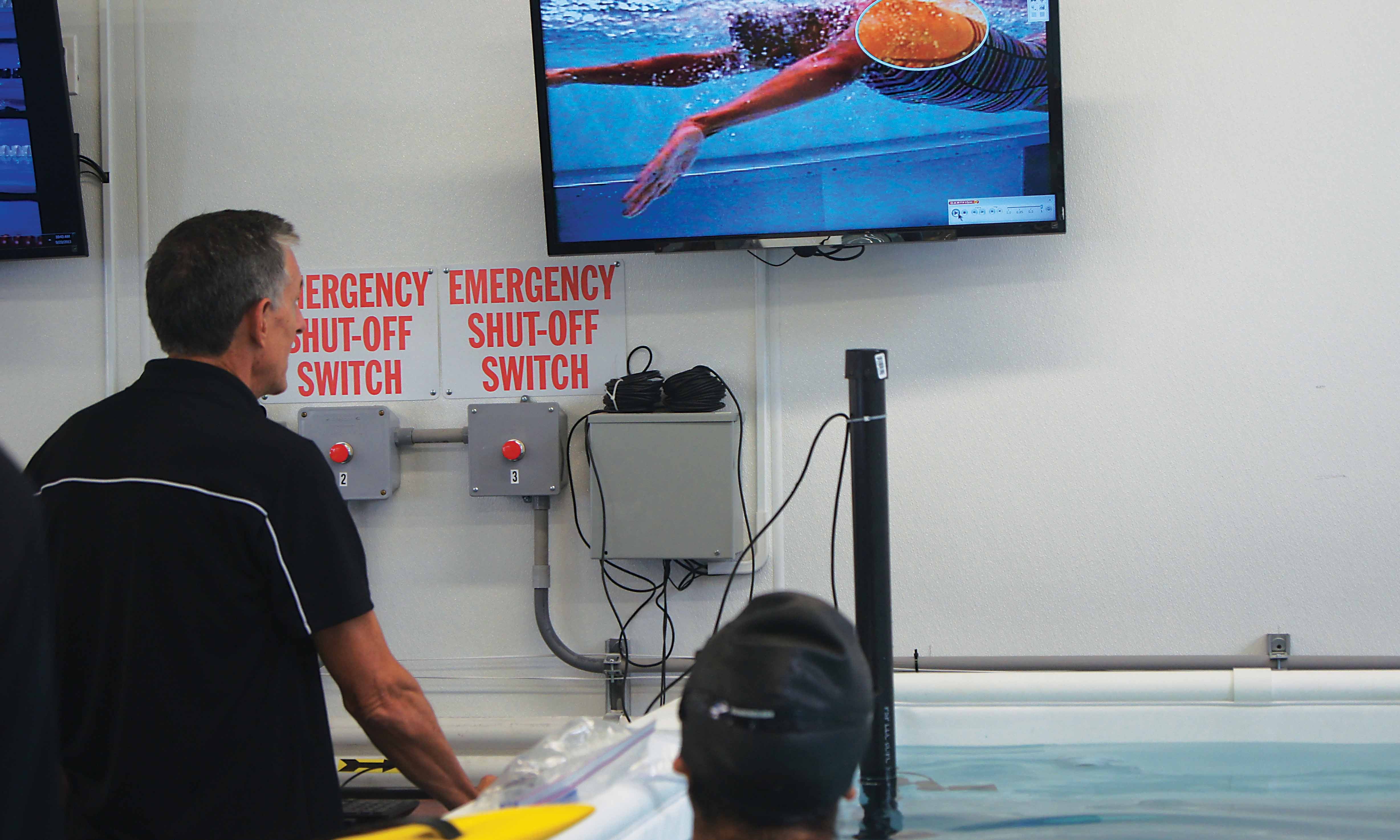The Most Effective Way To Become A Better Swimmer

Watching a video of your own stroke is perhaps the most effective way of addressing inefficiencies and finding new speed.
If you’ve ever tried incorporating swim technique tips delivered from the pool deck, you know how tough it can be to execute instruction for very nuanced movements in the water. Rotate my elbows how? Do what with my hips? Recording a video of your stroke is perhaps the most effective way of identifying exactly where your stroke inefficiencies and imbalances are—and finally understanding your biggest opportunities for quick improvement and new speed.
It was this realization that drove lifelong swimmer Michael Mann to establish SwimLabs, a national franchise of swim schools that uses underwater cameras and Dartfish analysis software to help swimmers become more efficient in the pool. “I started investigating independent swim schools and noticed that there wasn’t anything for Masters swimmers,” says Mann, a former member of the University of New Mexico swim team. “I went to the Olympic Training Center in Colorado Springs about 10 years ago and saw what [former Olympic swimmer] Jimmy Powers was doing for the Olympic athletes. They had this fabulous facility with underwater video cameras and instant feedback, and I thought, ‘What if we could do this for a regular person who just wants to learn how to swim using the same video capabilities and technology?’”
Mann, now 59, was SwimLabs’ first student. “It wasn’t until I looked at my stroke and analyzed it that I started making some bigger waves on the Masters circuit,” he says. Since opening SwimLabs in 2007 with business partner Giff Cutler, he’s set 11 age-group world records and been voted Masters Swimmer of the Year (twice) by U.S. Masters Swimming. “My times when I was 55 were as fast as when I was in college,” he says.
RELATED: Andy Potts’ Freestyle Swimming Stroke
While 60 percent of the SwimLabs clientele is kids just learning how to swim, the rest are adult swimmers, including pro triathletes like Luke Bell, looking to become even stronger swimmers. How it works: The swimmer jumps into a pool that churns out a continuous current of a specific intensity. As the swimmer takes strokes, three cameras—a stationary one at the front of the pool, one overhead and a roving camera on the side of the pool—record video that is immediately analyzed on a large flatscreen beside the pool. A SwimLabs coach—ex-Olympians and even a former pro triathlete among them—can compare your stroke footage next to that of an Olympic swimmer to point out very specific inefficiencies and technique errors. “You can see what you’re doing explicitly with your hand, elbow, shoulder and hips, and then slow the video down and see where you become less efficient than these honed, talented swimmers,” says Mann. “You want to find more speed and efficiency with less energy output.”
A mirror on the bottom of the pool lets the swimmer view his or her stroke from below, giving a useful perspective—especially when it comes to analyzing and adapting the all-important catch and pull phases. Another useful feature: SwimLabs’ video library of 200 drill demonstrations. “If you’re struggling with elbow rotation or your kick seems to be coming from your knees or ankles, we’ll put up a drill you can use when you go to the pool to get you in the right position,” says Mann. At the end of the 30-minute session ($95), the swimmer leaves with a DVD of his filmed stroke, the comparative analysis and the drill demos.
It all comes back to the premise that seeing—and re-seeing—your stroke is the key to getting faster in the pool. “It’s visual,” Mann says. “When you see something, it’s a lot easier to repeat it than if someone is telling you what to do.”
RELATED: Become A Better Swimmer With Limited Training
SwimLabs Locations
Highlands Ranch, Colo.
Centennial, Colo.
Vienna, Va.
Encinitas, Calif.
Lake Forest, Calif.
Naperville, Ill.
Follow Triathlete on Twitter @Triathletemag for inspiration, new workout ideas, gear reviews from our editors and more.